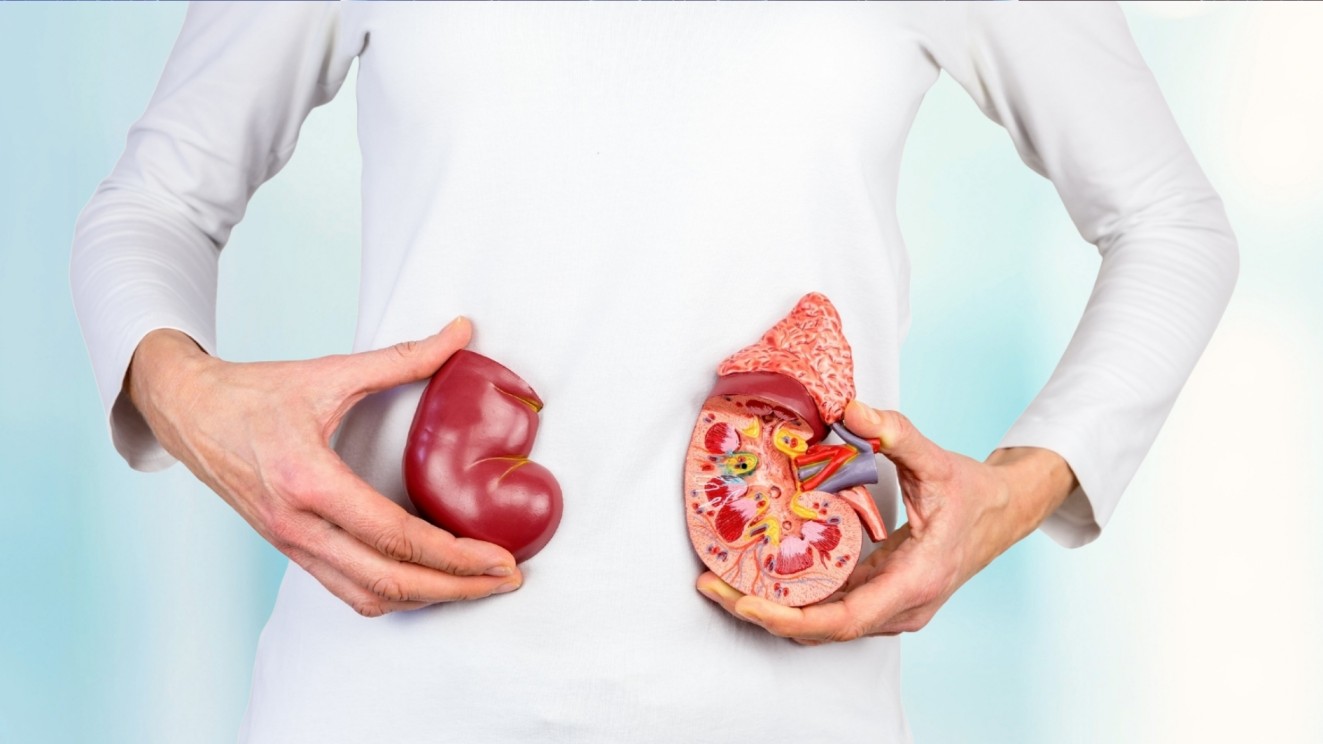Excretory system: excretion. The word excretion simply means the removal of all substance from an organism's body. Excretion refers to the removal of the principal metabolism products and toxic items from the body. Carbon dioxide, ammonia, urea, uric acid, creatinine, various pigments, and inorganic salts are the principal metabolism products. Also, residues of undigested food, heavy metals, drugs, toxic substances, and pathogenic organisms such as bacteria are present in the body. All these substances must be removed to keep the body in a healthy state.
Various systems/organs within the body are involved in the performance of the excretory function:
While various organs are involved in the removal of waste from the body, their excretory capacity is limited. However, the renal or urinary system has the highest excretory capacity and thus plays a major role in homeostasis.
The Renal function comprises the following:
The kidneys are the organs of excretion. Together with a pair of ureters and a urinary bladder, the kidneys are the excretory system in which the urine is generated. Ureters are carrying urine to the urinary bladder. The urinary bladder holds the urine until it is drained. Urine is drained from the bladder through the urethra. The kidneys are the primary means of removing metabolic waste products that are no longer required by the body.
The functional unit of the kidney is nephron and each human kidney has approximately 1 million nephrons.
In addition to regulated calcium and phosphate absorption, the kidneys are responsible for the reabsorption of glucose and amino acids from the plasma filtrate. The kidneys filter 150L of blood per day, if the body contains 5L of blood that means the entire volume of filtered blood is 30 times per day, which means more than one time every hour.
For the body to remain healthy, the body needs to eliminate metabolic waste products and other foreign substances that are no longer or not needed anymore by the body, utilizing an excretory system, the system responsible for excreting unnecessary material from the body, which includes several organs or systems such as the lungs, the skin, the digestive system, and the liver, but the most important system concerned with eliminating substance is the urinary system especially the kidneys that are considered an excreting organ, because of their remarkable ability of filtrating and eliminating various substance, that they possess by the nephrons and the unique anatomical structure of the kidneys parts where the urine can go down from the renal papilla to the minor calyces which join together to form the major calyces which funnel the urine into the renal pelvis the urine then collects in the pelvis and heads out of the kidney through the ureter that passes through the renal hilum.
Micturition is only one of the kidneys numerous functions, kidneys are the principal regulators of the internal environment of the body the composition of all body fluids are either directly or indirectly regulated by the kidneys, they also involved in the regulation of the arterial pressure besides maintaining the ph. balance, secreting hormones and the production of Erythrocyte, thrombocytes, and Glucose. This article only shows a small part of kidneys significance and greatness and how their role is essential in the human body. Read Renal system physiology part 2:to know what is a nephron? Its anatomy, functions, and its renal blood supply.
1. GUYTON AND HALL, Textbook of Medical Physiology, 12th edition, Jackson, Mississippi, University of Mississippi Medical Center, [2011]
2. K SEMBULINGAM AND PREMA SEMBULINGAM, Essentials of Medical Physiology, Sixth Edition, New Delhi, Panama City, London, Dhaka, Kathmandu, JAYPEE BROTHERS MEDICAL PUBLISHERS (P) LTD, [2012]
3. INDU KHURANA AND ARUSHI KHURANA, Textbook of Medical Physiology, 2nd Edition, India, Elsevier India, [December 1, 2015]
4. JOHN FEEHALLY, JÜRGEN FLOEGE, MARCELLO TONELLI, RICHARD J. JOHNSON, Comprehensive Clinical Nephrology, Sixth Edition, Edinburgh, London, New York, Oxford, Philadelphia, StLouis, Sydney, Elsevier, [September 11, 2018]
5. VALERIE C. SCANLON, TINA SANDERS, Essentials of Anatomy and Physiology, fifth edition, New York, F. A. Davis Company, [January 1, 2006]
6. KIM E. BARRETT, SUSAN M. BARMAN, HEDDWEN L. BROOKS, JASON YUAN, Ganong's Review of Medical Physiology, 26th edition, New York, Chicago, San Francisco, Athens, London, Madrid, Mexico City, Milan, New Delhi, Singapore, Sydney, Toronto, Mc Graw Hill Education, [January 29, 2019]
7. ANNE WAUGH, ALLISON GRANT, Ross and Wilson ANATOMY and PHYSIOLOGY in Health and Illness, 11th edition, Edinburgh, London, New York, Oxford, Philadelphia, St Louis Sydney, Toronto, Churchill Livingstone, [September 7, 2010]
Gross internal anatomy of the kidneys is composed of renal cortex, Renal medulla, Renal pelvis, renal hilum and renal sinus, the size and shape of the kidneys…

A nephron is classified as the structural and functional unit of the kidney. The two types of nephrons are� cortical nephrons and juxtamedullary nephrons.

The urethra is a muscular canal that extends from the neck of the bladder to the exterior of body. Read more about the anatomy of urethra in this article.

Chronic kidney disease (CKD) is a disease in which irreversible damage to the kidneys leads to a reduction in kidney function. CKD has 5 stages and many complications.

Learn about medical uses, safety profile, mechanisms and interactions of statins.

Comprehensive guide on Ozempic (semaglutide), including its uses, dosage, side effects, warnings, and interactions.
.png)